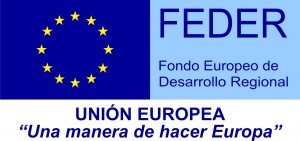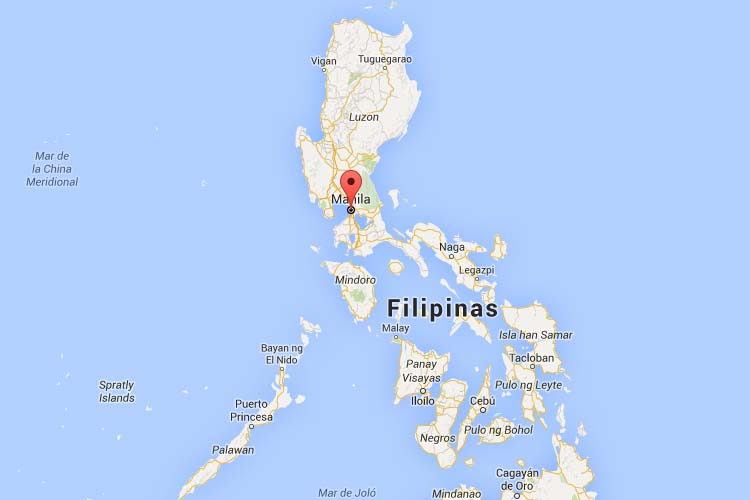Manila, founded and governed by López de Legazpi, became a dependent territory of the Viceroyalty of New Spain in 1565. When the Spaniards arrived in the archipelago, the circulating currency consisted of pre-Hispanic gold piloncitos, copper coins beaten in China, cauris (a kind of small sea snail) and rice.
The Archivo General de Indias records several requests for coinage on the islands in the 17th century, but there is no record that they were ever granted. The silver minted in the Indian mints became the currency used in the islands and the currency of the whole of the East. The large quantity of 8 reales coins with Oriental stamps testifies to a considerable flow of Hispano-American coinage to Asia, with the Philippine archipelago as a bridge.
During the reign of Philip V, the new serrated-edge coins of great technical perfection began to be sent out, which coexisted with the cut-out coins, without making them disappear from circulation. The absence of fractional currency meant that the 8 and 4 reales coins received were cut into pieces, known as moneda cortada among the Spaniards. Rods also appeared, which are mentioned in several sources, small bronze or copper ingots and discs minted on one side. The few that have survived are dated 1724 to 1728 and 1733 to 1743.
On 22 September 1762, the British occupied the archipelago until 12 June 1764, when they were expelled from Manila by the army created by Simón de Anda y Salazar. The shortage of fractional currency after the war with England prompted the Cabildo to convene a council on 25 June 1764 to discuss a plan to mint new rods. Permission was granted by the Fiscal, Francisco Leandro de Viana. In March 1766, new rods worth 5,000 pesos were minted in Manila. On 29th July the Cabildo sent a letter to Charles III, enclosing two samples of the new coins and requested a licence to mint the same type of coins in other provinces. On 19 December 1769, Charles II issued an official document to Governor General José Raón, informing him that, if he approved the Cabildo's request, he could mint the same type of coinage for those provinces, albeit under certain conditions. The Audiencia was to supervise the minting operations and examine all the coins minted. The coins were to bear the royal coat of arms instead of the Manila seal. The new coins were to be cuartos and octavos. Minting began on 18 March 1771. Completed in the same year, the coins were submitted to the Audiencia for examination. On 7 January 1773 it approved the new coins and ordered the immediate withdrawal and demonetisation of the 1766 rods. Samples were sent to Spain for approval. The official document issued on 10 October 1777 approved the minting, marks, and dies of the new coins and ordered their immediate distribution as legal tender. In 1783 and 1783 they were minted again and during the reign of Charles IV in 1798, 1799 and from 1805 to 1807. Under Ferdinand from 1817 to 1834 and under Isabella II in 1835.
With the emancipation of the Spanish colonies in America, the archipelago found that most of the currency in circulation came from countries whose new state was at war with Spain. Faced with this situation, with the decree of 13 October 1828, the Captaincy General of the Philippines ordered that all foreign coins found in the Philippines would be countermarked and that they should not be accepted if they did not comply with this requirement. This stamp was used in 1828, 1829 and 1830. On 29 October 1832 a new decree ordered the use of a new, smaller countermark with the royal crown above the king's figure F.7.º. With the reign of Isabella II, the Supreme Government of the Islands, on 20 December 1834, ordered the countermark with its initials Y. II. When Spain recognised the American republics, with the decree of 31 March 1837, it abolished the countermark as unnecessary. From then on, they continued to circulate legally in the Philippines until 1903.
During the reign of Isabel II, the need for coins finally led to the decision to establish a Mint (Casa de Moneda) in Manila. The Royal Order of 17 January 1857 adopted the Peso as the monetary unit for the Philippine Islands. Its establishment is set out in the Royal Decree of 8 September 1857 and the ordinances of 19 February 1859 set out its operation. The Manila Mint (Casa de Moneda) was inaugurated on 19 March 1861 and began minting gold coins with the dies sent from the Madrid Mint (Casa de Moneda).
The silver coinage was ordered from Madrid in March 1862 but was probably delayed because the city of Manila was practically destroyed by an earthquake in 1863. In 1864, the minting of 10 and 20 centavos began on a regular basis, and in 1865 the minting of 50 centavos.
After the reign of Isabella II, minting continued in her name until 1880 when the Ministry of Finance ordered the minting of new coins with the bust of Alfonso XII. In August 1880 the new punches, dies and dies were prepared in Madrid, on September 1 they were sent from the port of Barcelona and in October confirmation of their arrival in Manila was received. By decree of the Manila Intendance of November 22, 1880, the minting of the new stamps was ordered. During the reign of Alfonso XIII, by Royal Order of April 15, 1886, it was decided to continue minting with the same stamps and year 1885. Finally, given its lack of productivity, the Madrid government, by Royal Decree of 25 October 1889, ordered the closure of the mint.
In 1893, due to the shortage of divisionary coins in the Philippine archipelago, the Minister of Overseas Territories, Mr. Antonio Maura, presented the Queen Regent Maria Cristina with a Royal Decree to reopen the Mint (Casa de Moneda) and mint 50, 20, 10 centavos de peso and copper pieces of 1 and 2 centavos de peso. However, the revolution for independence which began in 1896 prevented this from being carried out and the Royal Decree of 18 April 1897 approved the minting in Madrid of the last overseas coin, with the denomination of one peso, to circulate throughout the archipelago. Finally, on 23 December 1897, peace was signed with the pro-independence rebels.
After the Spanish-American War of 1898, the Philippines was taken over by the United States. With the American occupation, a new monetary system was established. All circulating currency was demonetised and sent to the United States to be melted down.
The Manila Mint
| Southeast Asia | |
| Philippines | |
| Manila | |
| Manila | |
| 1728 | |
| 1889 |
Historical review
Actual state
It is not known where currency was minted in Manila since the reign of Philip V. Except for the location of the Mint (Casa de Moneda) founded by Isabella II, which has been located thanks to the map drawn up in 1877 by J. Oppel and Bernardino de los Santos. It indicates its location as number 16, within the city walls, in what is now Calle Recoletos, opposite the courtyard of the convent of the Augustinian Recollects. The mint and the convent were demolished at the beginning of the 20th century. Today, the Maritime Training Center building occupies the site.
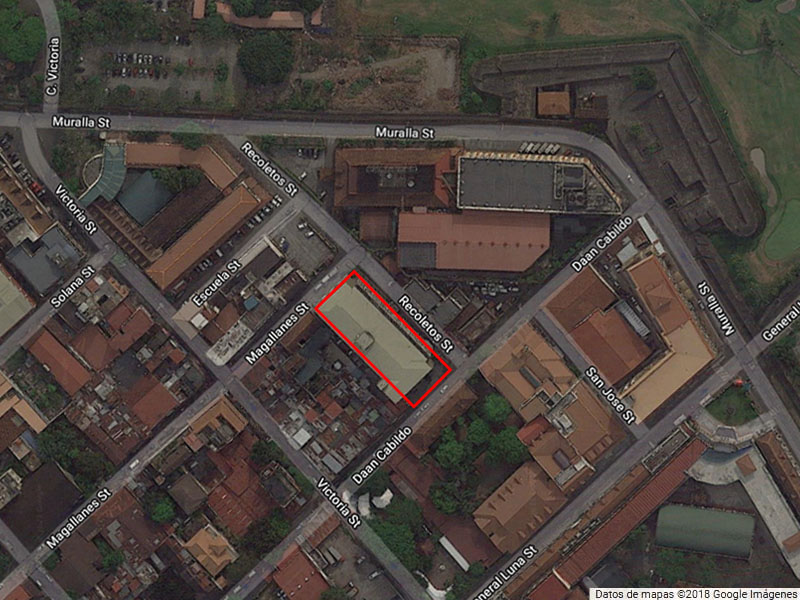
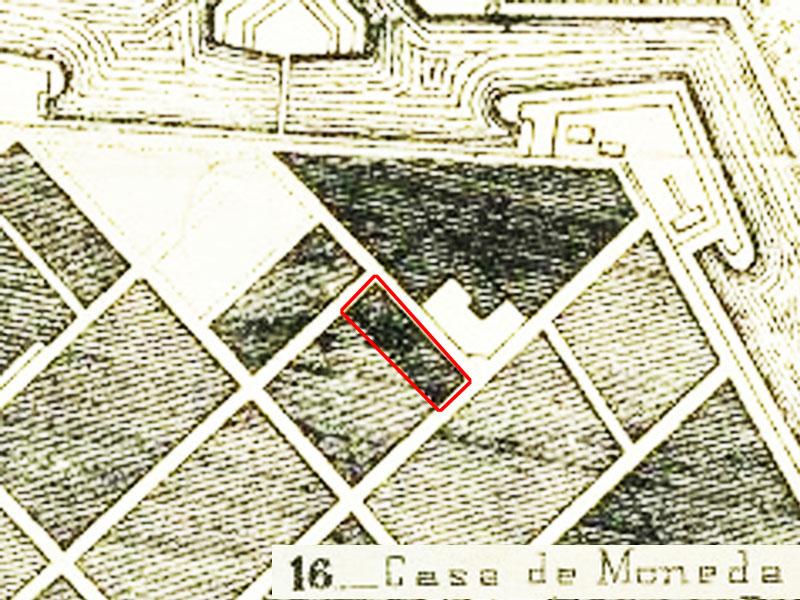
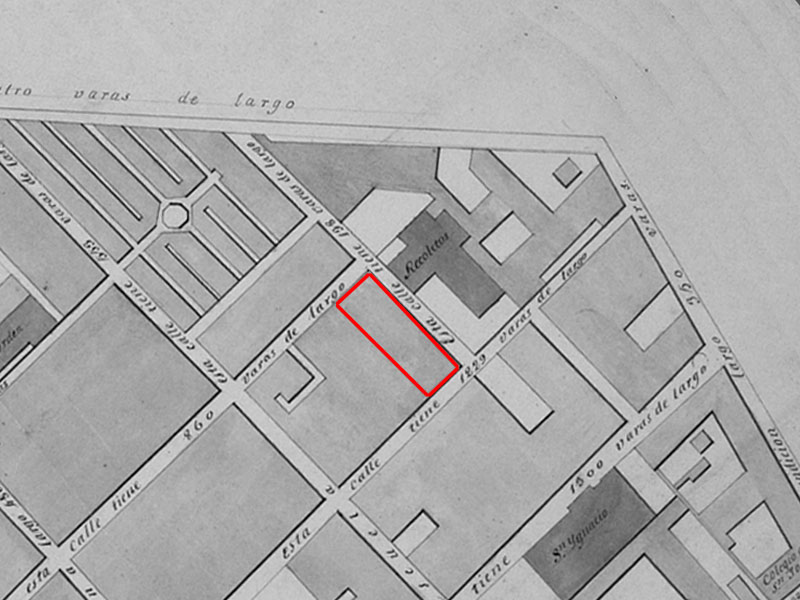
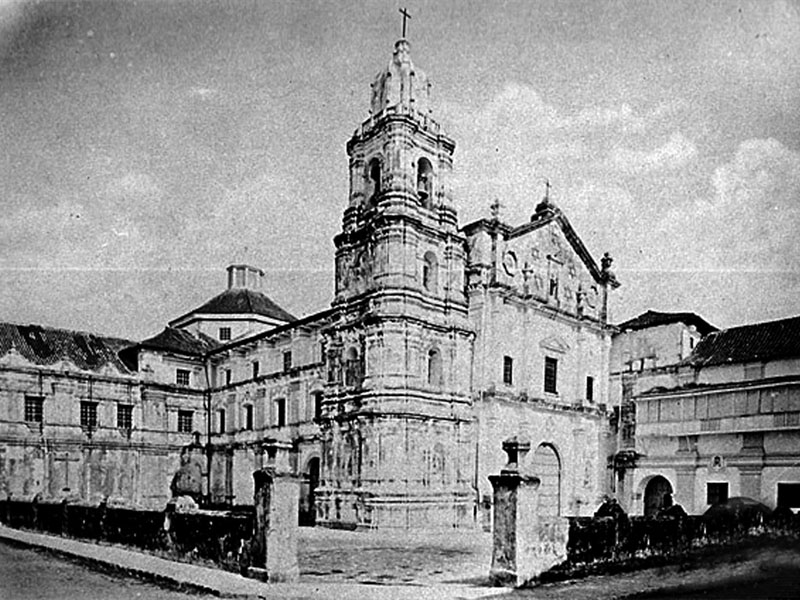
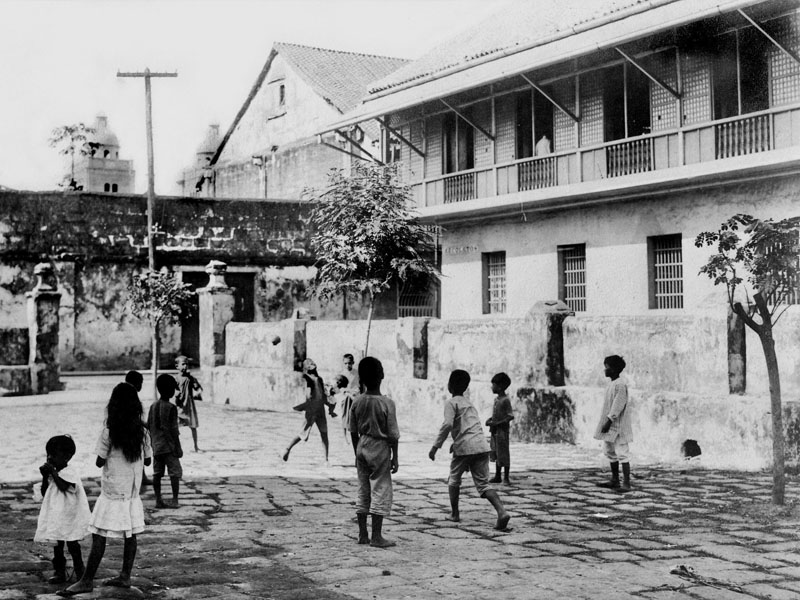
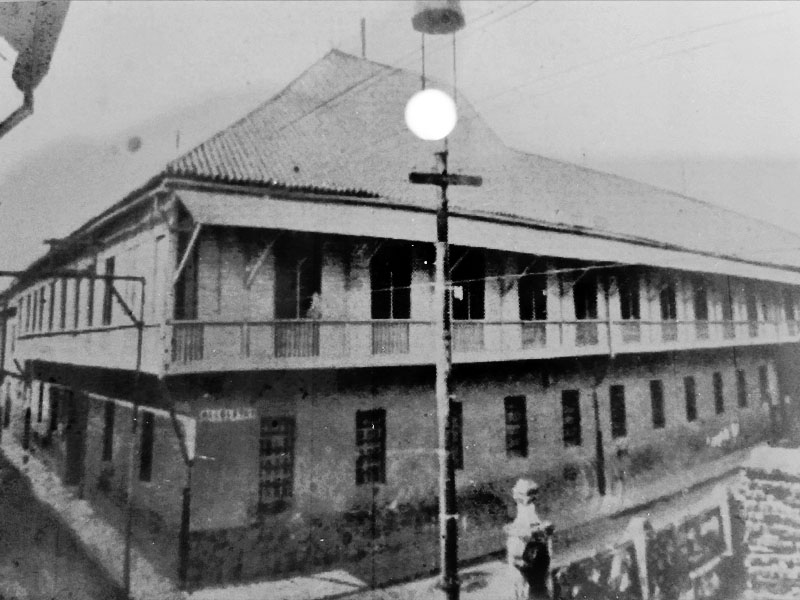
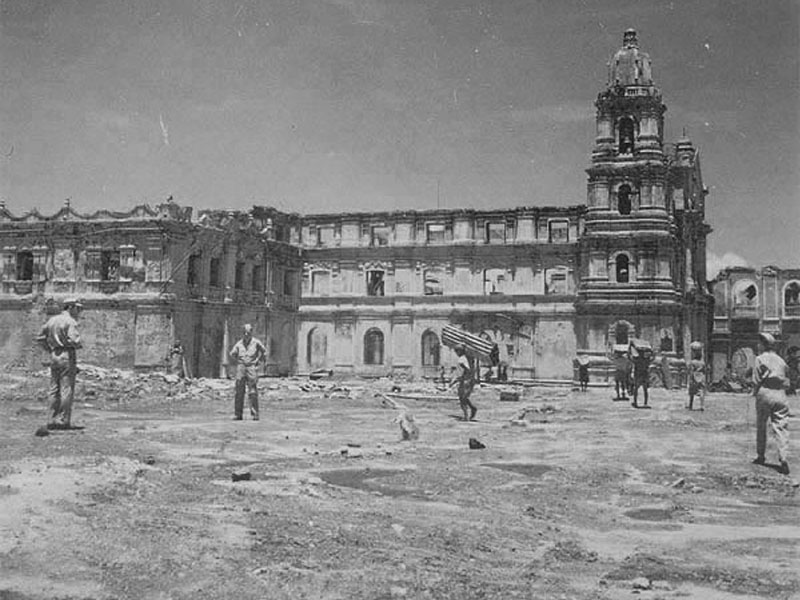
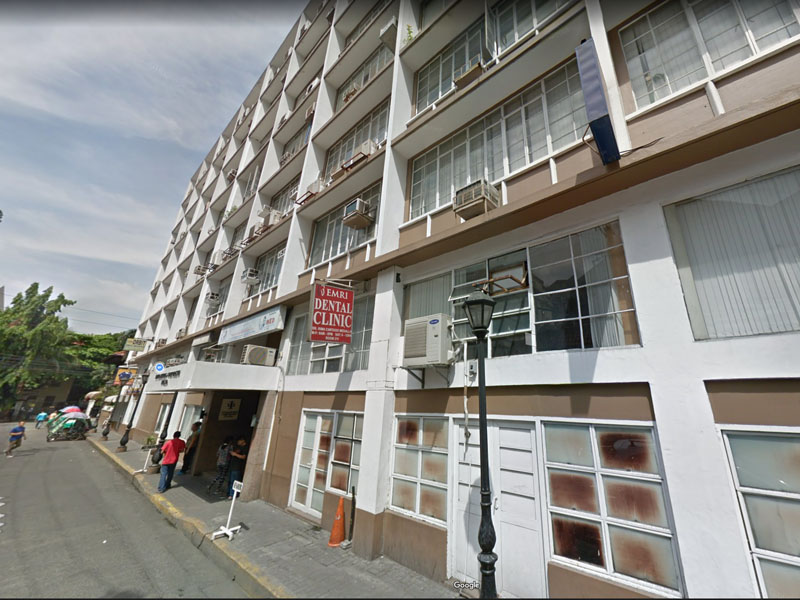
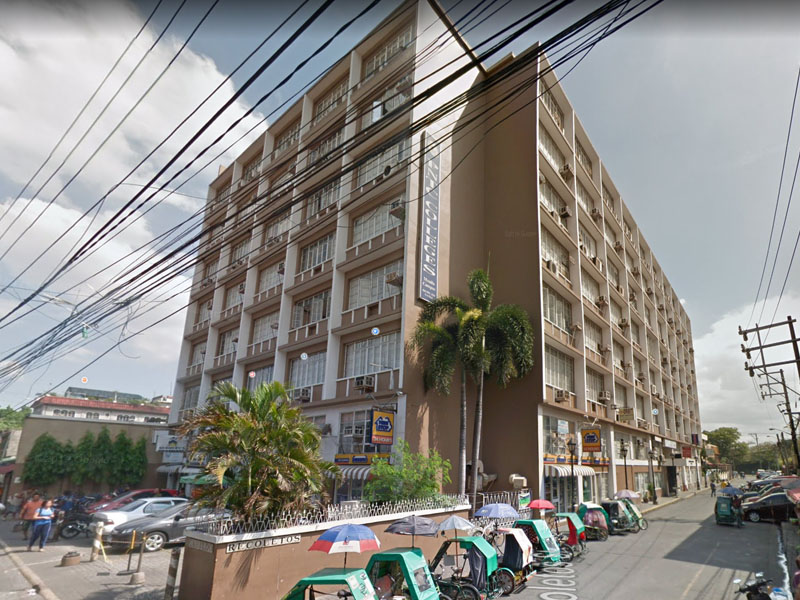









Source: Historia de la moneda española. Madrid. 1976 (Octavio César Gil Farrés); La moneda circulante en la Capitanía General de Filipinas (Pedro Damián Cano Borrego); The Copper Coinage of the Cabildo of Manila. 1985. (Celestina P. Boncan); Archivo Histórico Nacional. ULTRAMAR, 1395-1398: Expediente general de la Casa de la Moneda de Manila; Moneda y crisis monetarias en Filipinas durante la época hispánica (1565-1898). Madrid. 2021 (María Teresa Muñoz Serrulla)
Type of coinage
| Period | Gold | Silver | Copper | |
|---|---|---|---|---|
| Alfonso XII | 1874-1885 | |||
| Isabel II | 1833-1868 | |||
| Fernando VII | 1808-1833 | |||
| Carlos IV | 1788-1808 | |||
| Carlos III | 1759-1788 | |||
| Felipe V | 1700-1746 | |||
Source: eNumismatic (José David Rodriguez Soage).
Author:
2021-10-08 .
